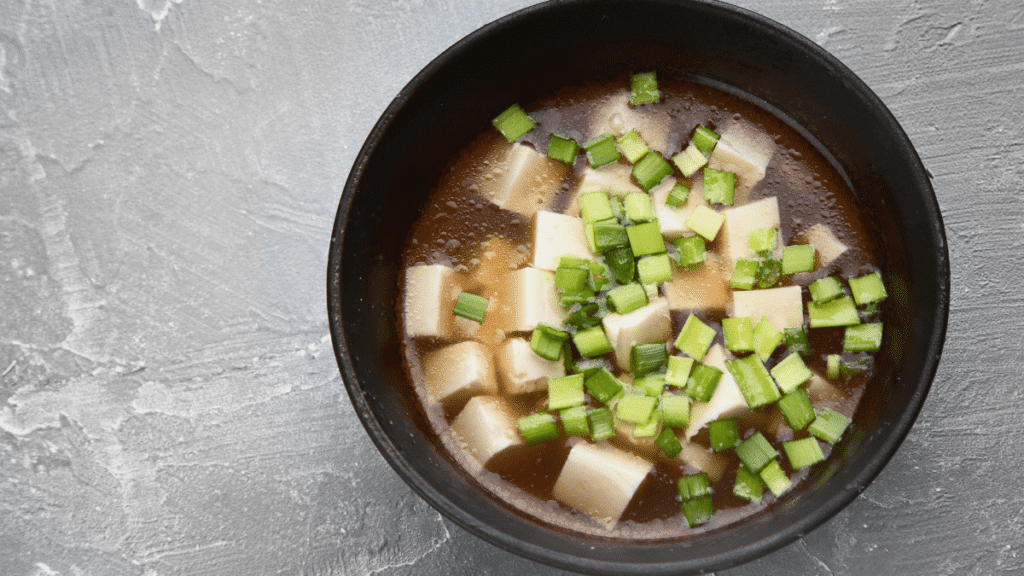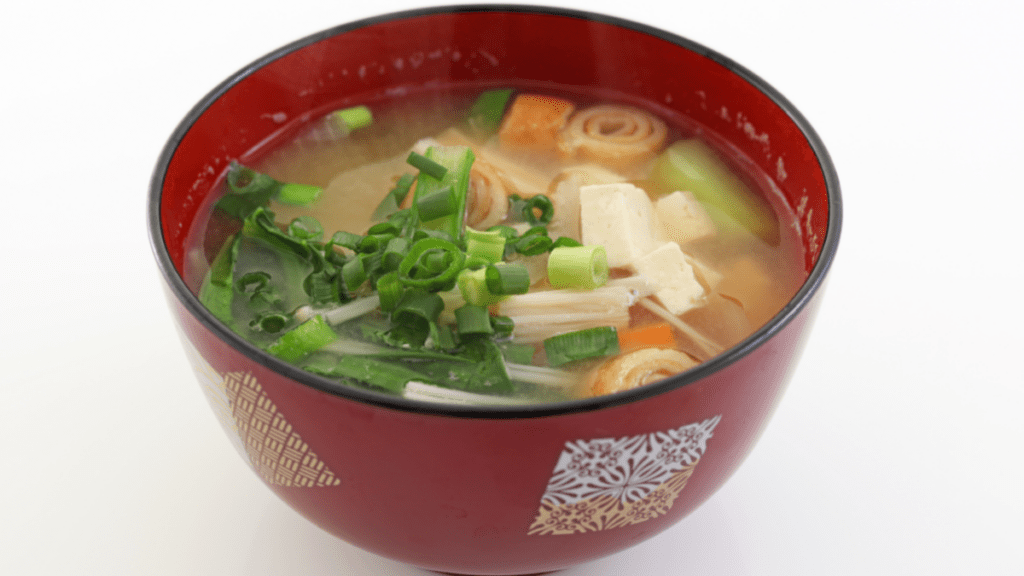Introduction:
Regarding healthy eating, most people assume they must give up their favorite foods. However, many healthy options are excellent and delicious for you. Miso soup is one such option that has been gaining popularity recently. This traditional Japanese soup is not only tasty, but it also has many health benefits. In this article, we will explore the delicious and calorie-friendly benefits of miso soup.
What is Miso Soup?
This traditional Japanese soup combines miso paste with dashi stock (a broth made from dried fish and seaweed). It’s served as a side dish with meals or as a light snack. Miso paste is made from fermented soybeans, a rich source of protein and probiotics. Miso soup also contains other healthy ingredients like seaweed, tofu, and scallions.
Health Benefits of Miso Soup:
- Low in Calories: Miso soup is a calorie-friendly option, making it a perfect addition to any diet. A bowl of miso soup contains only 50-80 calories, making it an ideal snack or appetizer.
- High in Nutrients: Miso soup is not only low in calories but also high in nutrients. It is a rich source of protein, vitamin B12, vitamin K, and antioxidants.
- Probiotics: Miso paste ferments soybeans with a fungus called Aspergillus oryzae. This fermentation process creates probiotics that are good for gut health. Probiotics are essential for a healthy gut and can help improve digestion, boost immunity, and reduce inflammation.
- Helps Reduce Cancer Risk: Miso soup contains compounds called isoflavones, which have been linked to a reduced risk of breast cancer in women. Isoflavones are also known for their anti-inflammatory properties, which can help reduce the risk of other types of cancer.
- Boosts Immune System: Miso soup is a good source of vitamin B12, which is essential for a healthy immune system. which helps to produce red blood cells and it also helps boost energy levels.
Types of Miso Soup
This is a traditional Japanese dish that has gained popularity worldwide. It’s made from miso paste, a fermented soybean paste that gives the soup a unique flavor and nutritional benefits. Miso soup comes in different types, and here are some of them:
- White Miso Soup: White miso soup is made from a light-colored miso paste that is typically sweeter and milder in flavor. It’s an excellent choice for those new to miso soup or who prefer a lighter taste.
- Red Miso Soup: Red miso soup is made from a dark-colored miso paste with a stronger, more robust flavor. It’s often used in heartier soups and stews and is an excellent choice for those who enjoy a more intense taste.
- Mixed Miso Soup: Mixed miso soup is made from white and red miso paste. It has a unique flavor that combines the sweetness of white miso with the depth of flavor of red miso.
- Vegetable Miso Soup: Vegetable miso soup is made with a combination of miso paste, vegetables, and tofu. It’s an excellent choice for vegetarians and vegans looking for a plant-based protein source.
- Seafood Miso Soup: Seafood miso soup is made with a combination of miso paste, seafood, and vegetables. It’s a hearty soup that is often served in Japanese restaurants.
How to Make Miso Soup?

Making miso soup is relatively easy and can be done in simple steps. Here’s a quick recipe for making miso soup at home.
Ingredients:
- 4 cups of water
- 2 tablespoons of miso paste
- 1/2 block of tofu, cubed
- 1 scallion, chopped
- 1/4 cup of wakame seaweed
Instructions:
- Bring 4 cups of water in a pot for boil.
- Flame to low and add the wakame seaweed.
- Let the seaweed simmer for 5-10 minutes until it becomes soft.
- Add the cubed tofu to the pot and simmer for 2-3 minutes.
- Please turn off the heat and add the miso paste, stirring until it dissolves.
- Add the chopped scallions to the soup and serve hot.
Calories in Miso Soup
One of the benefits of miso soup is that it is low in calories. A single bowl of miso soup typically contains 50–80 calories, depending on the ingredients used. This makes it an ideal appetizer or snack. It’s the perfect starter or snack for people seeking to limit their calorie intake.
The calorie content of miso soup can vary depending on the ingredients used to make it. For example, miso soup with tofu, seaweed, and scallions will have a different calorie count than miso soup made with chicken, shrimp, or pork. It’s essential to be mindful of your ingredients when making miso soup if you’re trying to watch your calorie intake.
If you’re ordering miso soup at a restaurant, it’s essential to be aware that the calorie count may be higher than if you were to make it at home. Many restaurants may add ingredients like noodles or fried tofu, which can significantly increase the calorie count.
Despite its low-calorie count, miso soup is still filling and satisfying. It’s an excellent option for a nutritious and balanced diet because it contains protein, vitamins, and minerals.
Nutrition in Miso Soup
| Nutrition Values | Amount Per Serving |
| Calories | 50-80 |
| Total Fat | 2-3g |
| Saturated Fat | 0.5g |
| Cholesterol | 0mg |
| Sodium | 500-800mg |
| Total Carbohydrates | 5-7g |
| Dietary Fiber | 1-2g |
| Sugars | 1-2g |
| Protein | 4-6g |
| Vitamin A | 10% DV |
| Vitamin C | 2% DV |
| Calcium | 2% DV |
| Iron | 4% DV |
Facts
- According to the USDA, all you need to do is to heat water and stir in the packet, which has only 35 calories. https://www.livestrong.com/article/304348-how-many-calories-are-in-miso-soup/
- We Recommend Nutrition By Michelle Kerns Nutrition By Jaime Osnato According to the U.S.https://www.livestrong.com/article/304348-how-many-calories-are-in-miso-soup/.
FAQs:
Q. Is miso soup vegetarian?
A. Miso soup can be made vegetarian using vegetable broth instead of dashi stock.
Q. Is miso soup gluten-free?
A. Miso paste is gluten-free, but checking the ingredients is essential.
Conclusion
Miso soup is a calorie-friendly option, perfect for those who want to watch their calorie intake while enjoying delicious and nutritious food. You can enjoy miso soup as a healthy addition to your diet by using wholesome ingredients and being mindful of portion sizes.
Also Read Cupcakes Kale Chips Yummy Healthy Eats Tasty Scrumptious Sweets



